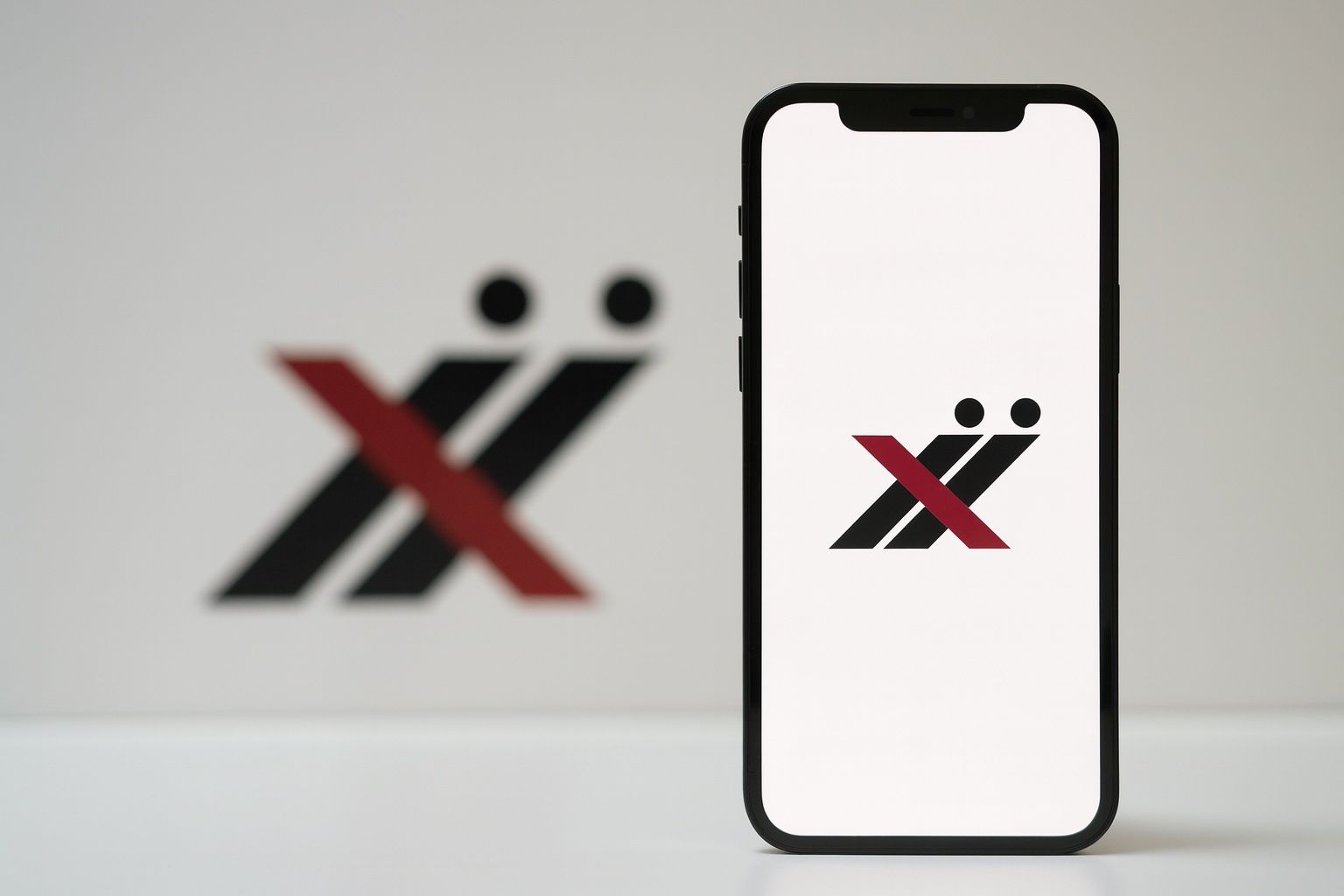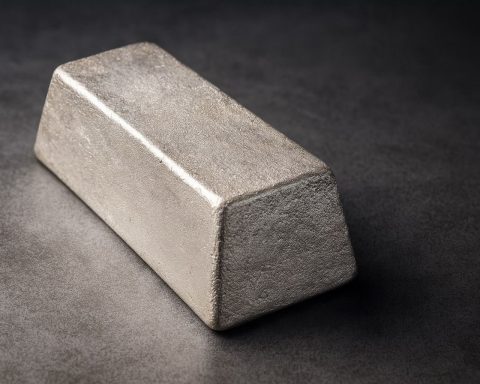- Stock Skyrockets on Cash Infusion: 22nd Century Group’s shares jumped over 39% in after-hours trading to ~$2.10 after the company secured a $9.5 million insurance settlement, surging from a $1.51 close on Tuesday [1] [2]. The non-dilutive cash boost strengthens liquidity as the tobacco biotech shifts from “clean-up” to a growth phase, according to CEO Larry Firestone [3].
- Debt Eliminated, Capital Raised: The company became debt-free in Q3 after repaying its remaining $3.9 million senior debt, aided by a recent preferred stock offering. This move wiped out over $20 million in obligations under Firestone’s leadership [4], increasing pro forma tangible book value by ~$9.1 million and freeing capital to scale production of 22nd Century’s VLN® reduced-nicotine tobacco products [5].
- VLN® Expansion in Stores and States: 22nd Century’s flagship VLN® low-nicotine cigarettes – the only FDA-authorized combustible with 95% less nicotine [6] – are rolling out at approximately 140 Circle K convenience stores in Illinois, a major retail partnership announced last week. The company now has VLN sales authorized in 45 U.S. states (5 more pending), supported by new marketing and consumer-education campaigns [7]. Earlier this year, regional chains Smoker Friendly and Pinnacle also adopted the VLN technology, with initial orders shipped in August [8], signaling growing commercial traction.
- Financial Struggles and Upcoming Earnings: Despite revenue initiatives, 22nd Century remains unprofitable. It posted a net loss of about $3.3 million in Q2 2025 [9], and management has delayed its breakeven target to H1 2026 amid a strategic pivot to higher-margin VLN products [10]. Cash reserves had dwindled near $3 million by mid-year [11], raising dilution risks, though the new $9.5 million windfall provides interim relief. Investors are now focused on the Q3 2025 results due November 4, 2025, when Firestone and CFO John Otto will update on recent progress and outlook [12].
- Analyst Outlook and Sector Context: At around $2 per share, XXII stock is down ~90% from its 52-week high after steep declines, reflecting its micro-cap risk profile. Yet remaining analysts are cautiously optimistic – the average 1-year price target is $5.10 [13], implying potential upside if execution improves. Regulatory tailwinds could be pivotal: the FDA’s proposed rule to cap nicotine in cigarettes (0.7mg/g) would transform the $80+ billion U.S. cigarette market and hand 22nd Century a first-mover advantage as it already sells FDA-authorized very-low-nicotine cigarettes [14]. Major tobacco companies have pushed back, “decrying the loss of addictive levels of nicotine” in their products [15], but public health advocates and 22nd Century support the mandate, noting it’s backed by studies using 22nd Century’s own VLN products [16].
$9.5M Insurance Settlement Sparks Rally
22nd Century Group (NASDAQ: XXII) received a substantial $9.5 million cash payout this week from an insurance settlement tied to a November 2022 incident at its Grass Valley facility. The settlement, for business interruption claims, provides a non-recurring cash windfall that immediately bolsters the company’s balance sheet. Shares of XXII surged 39% in post-market trading on Tuesday to about $2.10 on the news [17], reflecting renewed investor optimism after the stock languished near all-time lows. (Even after the bounce, the micro-cap remains roughly 90% below its year-ago levels.)
Management hailed the insurance proceeds as a turning point. “This settlement closes another chapter of our past and solidifies our company’s transition from a clean-up to entering a growth phase. We now have a balance sheet with meaningful cash resources that will allow us to execute on our strategy,” said CEO Larry Firestone in a statement [18]. In other words, the infusion effectively draws a line under legacy setbacks and gives 22nd Century breathing room – and liquidity – to drive its growth initiatives in reduced-nicotine tobacco. The timing is opportune, as the company prepares to report third-quarter results and aims to convince the market that a turnaround is taking hold.
Financial Restructuring Leaves Debt-Free Balance Sheet
The $9.5 million windfall comes on the heels of a broader financial restructuring undertaken in recent months to stabilize 22nd Century’s finances. In September, the company announced it had completely eliminated its debt, repaying the last $3.9 million of senior secured notes following a Series A preferred stock offering [19]. Under Firestone (who took the helm earlier this year), 22nd Century has retired over $20 million in combined senior and subordinated debt, dramatically deleveraging the balance sheet [20]. This aggressive cleanup improved the company’s capital structure: management estimates the moves boosted adjusted tangible book value by roughly $9.1 million, or $1.05 per share, on a pro forma basis [21].
Free of interest burdens, 22nd Century says it can redirect its limited capital toward growth projects. Notably, the company plans to expand its inventory of proprietary VLN® tobacco leaf in Q4 2025, now with capacity to produce over 1 million cartons of VLN cigarettes annually [22]. Building a ample low-nicotine leaf supply is critical for scaling distribution as demand (potentially) rises. The fresh insurance cash will further pad working capital for these efforts. Analysts note that while a one-time payment doesn’t solve long-term funding needs, it buys the company more runway to reach its targets without immediately diluting shareholders. In the words of one corporate finance commentator, the settlement “improves liquidity and removes a past operational liability,” though execution will determine if it translates into measurable growth [23] [24].
VLN® Cigarettes Gain Retail Traction
Commercial rollout of 22nd Century’s VLN® reduced-nicotine cigarettes is accelerating, marking a critical test of the company’s business model. On October 23, the firm announced a major retail partnership with Circle K – a prominent convenience store chain – to stock VLN® products in roughly 140 Illinois locations to start [25]. This is 22nd Century’s largest placement yet in a mainstream outlet, significantly expanding VLN’s availability to consumers. According to the company, VLN cigarettes are now authorized for sale in 45 states (up from 38 at mid-year), with only five states still pending regulatory clearance [26]. Alongside the store rollout, 22nd Century unveiled new in-store marketing and consumer education materials to drive awareness of its unique cigarettes that promise the familiar experience with a fraction of the nicotine.
The Circle K deal builds on initial traction from smaller partners. In August, 22nd Century secured its first two regional brand partnerships – with Smoker Friendly and Pinnacle – which began selling VLN under their own brands after receiving initial stocking orders [27]. Those early adopters validated the concept of VLN technology licensing: rather than rely solely on its own VLN King brand, 22nd Century can supply low-nicotine tobacco to established cigarette labels seeking to offer compliant “low-nic” options. The fact that multiple distributors are now on board suggests retailers see a market niche for cigarettes that meet anticipated nicotine regulations and cater to smokers looking to cut down their dependence. However, a key question is consumer uptake – i.e. will adult smokers actually buy these reduced-nicotine cigarettes in meaningful volume? The company has not released detailed sales figures yet, so all eyes will be on upcoming earnings disclosures for any data on VLN’s sell-through rate and repeat usage.
Notably, 22nd Century’s VLN® cigarettes hold a distinguishing credential: they are the first and only combustible cigarettes authorized by the U.S. Food and Drug Administration to contain minimally addictive nicotine levels [28]. This FDA authorization (granted in 2021 under the Modified Risk Tobacco Product pathway) is both a marketing point and a competitive moat – it lends scientific credibility to VLN’s harm-reduction claims and erects a hurdle for would-be competitors, since no other reduced-nicotine cigarette has yet navigated the regulatory gauntlet. The company’s proprietary tobacco is grown to have 95% less nicotine than typical tobacco leaf, a trait achieved through plant biotechnology (without genetic modification) and protected by a robust patent portfolio [29] [30]. In essence, 22nd Century has spent decades developing unique IP in plant nicotine biosynthesis, and it is now racing to monetize that head start in the marketplace.
Ongoing Losses and Awaiting Q3 Results
While recent deals and cash injections are positive news, 22nd Century’s financials still paint a challenging picture. The company remains in the red, and in fact widened its losses this year. In the second quarter of 2025, 22nd Century reported a net loss of approximately $3.3 million, roughly matching its Q1 loss [31]. On a per-share basis the loss was enormous (over $13 per share) due to a reverse stock split and tiny share count – a reflection of how much shareholder equity has been wiped out. Revenues from its tobacco and hemp/cannabis segments (the company had a hemp genetics arm as well) have not been sufficient to cover operating costs, even after cost-cutting and exiting low-margin contract manufacturing [32] [33]. Profitability is now a distant goal: management told investors on the Q2 earnings call that they do not expect to break even until the first half of 2026, about a year later than an earlier target [34]. This delay underscores the difficulty of scaling a new cigarette brand and technology in a highly regulated industry.
Cash burn is another concern. By the end of Q2, cash on hand had dwindled to about $3 million [35] – perilously low for a company with ongoing R&D, manufacturing, and marketing expenses. In absence of the recent insurance recovery, 22nd Century likely would have needed to raise capital again by late 2025 to fund operations into 2026. The $9.5 million infusion relieves the immediate pressure, roughly tripling the cash buffer. It also came without diluting shareholders (unlike several dilutive equity raises in the past). Still, investors are anxious for signs of a path to self-sufficiency. Can 22nd Century’s refocused strategy (centered on VLN product sales and licensing) start to significantly narrow the quarterly losses in the coming quarters? Or will more funding – and dilution – be required before the company hits its 2026 profitability goal? These questions loom large ahead of the third-quarter earnings release on November 4, 2025.
On that date, the company will publish Q3 financial results pre-market and hold an 8:00 AM ET webcast with CEO Firestone and CFO John Danovitch (recently appointed) to discuss the numbers and business update [36]. Analysts expect modest sequential revenue growth thanks to broader VLN distribution, but likely another loss-making quarter given ongoing expenses and early-stage sales. The management team has indicated they will detail “progress made in recent months” and updated plans for the rest of 2025 on the call [37] – investors will be listening for any metrics on VLN uptake (store count, customer trials, reorder rates), as well as how the company is allocating its new capital (e.g. inventory build, marketing spend, or further debt paydown). Any improvement in cash burn rate or gross margins could help rebuild credibility. Conversely, if losses deepen or VLN adoption appears tepid, the stock’s newfound momentum could quickly evaporate.
Analyst Commentary and Stock Outlook
Wall Street coverage of 22nd Century Group is sparse due to its small size and volatile history, but the few analysts who do track the stock have issued optimistic targets – perhaps banking on regulatory catalysts. According to Fintel data, the average 12-month price target stands at $5.10 per share (with estimates ranging from ~$5.05 to $5.25) [38]. That is more than triple the current price, reflecting an expectation that 22nd Century’s fortunes could improve dramatically if its VLN products gain traction or if a nicotine mandate comes into effect. It’s worth noting, however, that these lofty targets may be outdated or speculative; the company’s fundamentals have deteriorated this year, and any valuation upside is highly contingent on execution. The stock has already undergone multiple reverse stock splits to cure low-price compliance issues – a history that has burned many shareholders. As of this week, XXII’s market capitalization is barely $5 million [39] [40], signaling the market’s deep skepticism. For context, 22nd Century was valued near $200 million just two years ago, before collapsing over 98% amid cash crunches and dilution. Bulls argue that with the balance sheet cleaned up and an FDA-friendly product line, the company could rebuild value from these depressed levels. Bears counter that bankruptcy risk might resurface if sales don’t ramp up in time or if the company missteps again.
To gauge 22nd Century’s prospects, analysts point to several upcoming catalysts. First, the FDA’s proposed nicotine cap regulation – formally introduced in October after years of discussion – could become a game-changer. The rule would mandate all cigarettes sold in the U.S. contain only minimally addictive nicotine content (no more than 0.7 mg per gram of tobacco). If enacted, this would effectively force Big Tobacco to either comply (likely by licensing or developing low-nicotine tobacco) or see their traditional high-nicotine products banned. As CEO Firestone highlighted, this policy could “fundamentally reshape the $80+ billion U.S. cigarette market” and give 22nd Century “a substantial first-mover advantage” as the only company with FDA-authorized reduced-nicotine cigarettes already in commercial production [41]. Public health groups enthusiastically back the plan, noting that it targets nicotine addiction at the source. Notably, the FDA cited 22nd Century’s own VLN® research cigarettes in support of the rule, demonstrating that ultra-low-nicotine products are feasible and acceptable to consumers [42].
However, the timeline and outcome of the nicotine rule remain uncertain. There is strong opposition from the tobacco industry: major cigarette manufacturers have filed comments sharply criticizing the proposal, with 22nd Century characterizing their feedback as “decrying the loss of addictive levels of nicotine in products that fuel their profits” [43]. These companies are likely to lobby against the rule or challenge it legally, which could delay implementation for years. Even if the rule is eventually adopted, 22nd Century would need to execute flawlessly to capture a meaningful slice of the market in the face of competition. Large players like Altria and Philip Morris could develop or acquire their own low-nicotine tobacco technologies (or focus on alternatives like e-cigarettes and heated tobacco products to circumvent the mandate). In the near term, the FDA’s actions serve more as a narrative tailwind for 22nd Century – reinforcing its positioning as a pioneering “tobacco harm reduction” play – rather than a guaranteed revenue driver.
Sector Trends and Competitor Activity
Beyond nicotine regulations, broader sector trends in nicotine and cannabis intersect with 22nd Century’s strategy. The company has dabbled in the hemp/cannabis field (it acquired GVB Biopharma in 2022 to produce hemp-derived ingredients, though that division underperformed and was partially wound down). Cannabis legalization efforts and the CBD market have been challenging, and 22nd Century has refocused on its core tobacco efforts for now. In the nicotine realm, consumer preferences are shifting: U.S. cigarette volumes continue to decline ~5% annually as smokers either quit or switch to vaping and oral nicotine pouches. This secular decline pressures all cigarette companies, but 22nd Century aims to carve out a niche by offering a “less addictive cigarette” for those who won’t or can’t quit nicotine outright. The company often frames VLN® as a smoking cessation/reduction tool, citing studies that smokers given very-low-nicotine cigarettes smoked less and exhibited reduced dependence. The FDA authorized VLN® in 2021 with a reduced exposure marketing claim, effectively acknowledging it as a potentially less harmful cigarette.
Still, competition for nicotine alternatives is fierce. 22nd Century isn’t competing only with Marlboro and Newport; it’s also up against nicotine vapes (e-cigarettes like JUUL or Vuse), nicotine pouches (e.g. Zyn), and pharmaceutical nicotine replacement therapies – all products used by smokers to cut down or quit. Those alternatives have gained far more traction than VLN so far. For instance, the leading oral pouch brand (Zyn) sold over $800 million last year, whereas 22nd Century’s total revenue was under $40 million. This suggests that while reduced-nicotine cigarettes are novel, many smokers seeking harm reduction have already migrated to other formats. 22nd Century’s challenge is to convince a segment of smokers to switch to VLN cigarettes instead of (or in addition to) these options. The company is betting that some smokers prefer the ritual of a cigarette and that VLN offers a bridge between quitting and continuing to smoke as usual. The coming months will test this hypothesis in the real world, as more stores carry VLN and the company’s marketing efforts ramp up.
On the competitive front, no other tobacco company currently sells an FDA-authorized low-nicotine cigarette in the U.S., giving 22nd Century a clear early-mover advantage. But this advantage may not last forever. If the FDA mandate looks likely, Big Tobacco could strike partnerships or licensing deals with 22nd Century (or its rivals) to access compliant tobacco seeds – or they might invest in their own genetic engineering to create similar low-nicotine plants. It’s notable that 22nd Century’s patents cover non-GMO breeding methods; a deep-pocketed competitor might try a biotech (GMO or gene-editing) approach to circumvent those patents. Additionally, 22nd Century faces indirect competition from abroad: companies in Canada and New Zealand have introduced their own low-nicotine cigarettes in response to those countries’ considering nicotine caps. The race to dominate the “less addictive cigarette” category is still very much in its infancy. For now, 22nd Century enjoys a lone wolf status in the U.S., but its long-term position will depend on how quickly it can grow before larger predators enter the fray.
Outlook: Cautious Optimism as Execution Remains Key
In summary, 22nd Century Group enters late 2025 with a mix of new hope and lingering challenges. The recent influx of $9.5 million in cash and the elimination of debt have materially improved the company’s short-term financial health, granting it a chance to refocus on growth rather than survival. The expansion of VLN® product availability – from specialty stores into a major chain like Circle K – is a critical step in validating consumer demand and scaling revenue. Furthermore, macro forces such as the FDA’s nicotine-reduction agenda provide a powerful narrative for the company as a potential future supplier to the entire industry, not just a niche player.
Yet, the road ahead is far from guaranteed. Execution risk is high for a company of this small size operating in the shadows of industry giants. 22nd Century must substantially boost its sales in the next year, manage its cash prudently, and possibly raise additional capital without crippling dilution – all while navigating regulatory uncertainties and fending off emerging competition. The upcoming Q3 and Q4 results will be telling: investors need evidence that the pivot to VLN is yielding tangible progress (e.g. rising sales, improving margins, stable expenses). Any signs of accelerating adoption or new partnership deals could rebuild confidence and momentum for the stock. Conversely, if the financial trajectory doesn’t improve or if the FDA rule gets stalled, market sentiment could sour again on XXII.
For now, 22nd Century’s story is one of a beleaguered penny stock attempting a bold turnaround in a historically static industry. The pieces – a patented technology, an FDA blessing, and now some cash to deploy – are in place for a potential rebound. Whether 22nd Century Group can capitalize on this moment will determine if its stock’s recent surge is the start of a sustained comeback or just a short-lived spark. Investors and industry watchers alike will be closely following the company’s next moves as the 22nd century of tobacco unfolds.
Sources: 22nd Century Group press releases and filings [44] [45] [46]; Benzinga market report [47]; TipRanks earnings summary [48] [49]; Fintel analyst data [50]; 22nd Century CEO letter to shareholders [51] [52]; Nasdaq/GlobeNewswire announcements [53].
References
1. www.benzinga.com, 2. www.benzinga.com, 3. www.stocktitan.net, 4. www.stocktitan.net, 5. www.stocktitan.net, 6. www.stocktitan.net, 7. www.stocktitan.net, 8. www.stocktitan.net, 9. www.tipranks.com, 10. www.tipranks.com, 11. www.tipranks.com, 12. www.nasdaq.com, 13. fintel.io, 14. www.stocktitan.net, 15. www.stocktitan.net, 16. www.stocktitan.net, 17. www.benzinga.com, 18. www.stocktitan.net, 19. www.stocktitan.net, 20. www.stocktitan.net, 21. www.stocktitan.net, 22. www.stocktitan.net, 23. www.stocktitan.net, 24. www.stocktitan.net, 25. www.stocktitan.net, 26. www.stocktitan.net, 27. www.stocktitan.net, 28. www.stocktitan.net, 29. www.stocktitan.net, 30. www.stocktitan.net, 31. www.tipranks.com, 32. www.tipranks.com, 33. www.tipranks.com, 34. www.tipranks.com, 35. www.tipranks.com, 36. www.nasdaq.com, 37. www.nasdaq.com, 38. fintel.io, 39. stockinvest.us, 40. stockinvest.us, 41. www.stocktitan.net, 42. www.stocktitan.net, 43. www.stocktitan.net, 44. www.stocktitan.net, 45. www.stocktitan.net, 46. www.stocktitan.net, 47. www.benzinga.com, 48. www.tipranks.com, 49. www.tipranks.com, 50. fintel.io, 51. www.stocktitan.net, 52. www.stocktitan.net, 53. www.nasdaq.com







